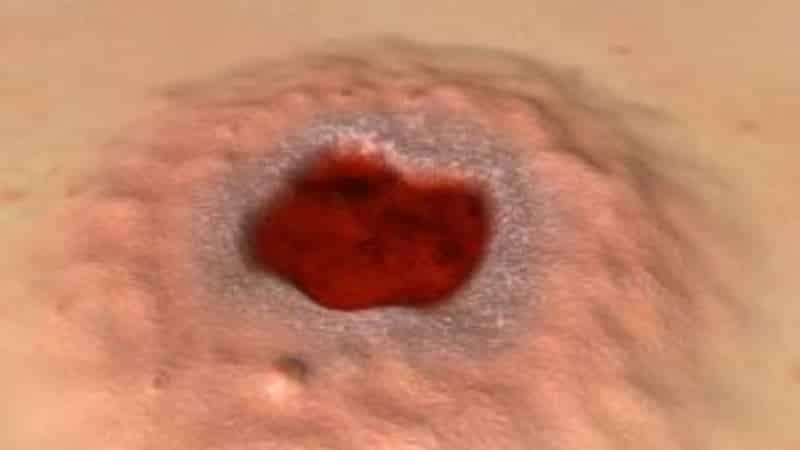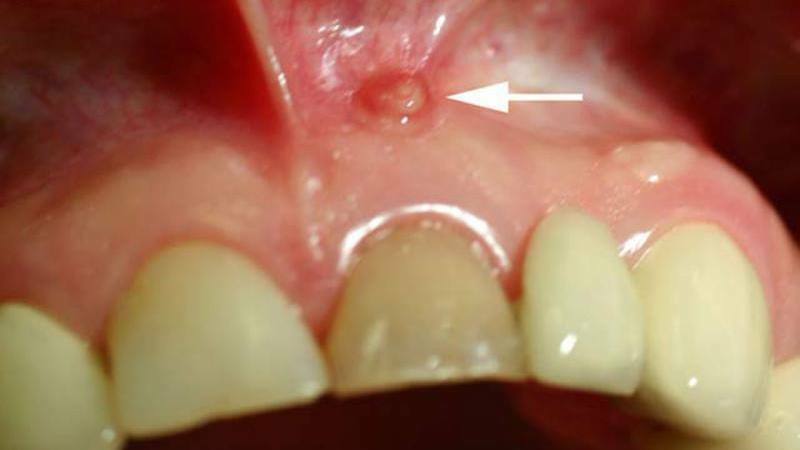ghiandole salivari: dove sono, ed i sintomi della malattia
Salivary glands are an important element of the digestive system.Unfortunately, their anatomical structure predisposes to the appearance of inflammatory processes, especially when the nearby organs and areas( ears, tongue, throat, sky, jaw, etc.) are also infected.
In the article we will examine where the salivary glands are located, what diseases they are exposed to and what methods of treatment are most effective.
Location and function
The gland producing saliva is anatomically located immediately under the mucous membrane.
Small ducts ( lingual, palatine, buccal, and also labial) can be found inside the soft tissues of the mouth and pharynx.In the total amount of them there are up to six hundred.The main function of secreted secretion is moisturizing and protective, which promotes wetting of the mucosa and maintaining its normal microflora.

Anatomy of the salivary gland
The large glands are paired : 3 pieces on each side of the neck and head.The largest of them is the parotid, which is located below the earlobe.It consists of 2 departments: superficial( frontal) and deep.Its surface is covered by a special fascial capsule, and secretion is carried out through the mucous surface of the cheek in the region of the seventh tooth.
Sublingual is located under the mucosa at the base of the tongue, and the submaxillary covers the upper part of the neck( checkered space).The secretion of secretion in both glands occurs in the region of the hyoid papilla.
An enzyme such as amylase , is capable of breaking down starch and processing it into maltose.There is also a connection between salivary ducts and glands that produce an internal secret.
Pathological processes and diseases
Many internal and external factors affect the functioning of the glands.Inflammatory processes are most often associated with obstruction of the ducts and stasis of secretion, as well as with the entry of purulent infection and pathological microflora into them.

F2 Swelling of the gland is one of the main symptoms of the salivary gland disease
The main symptoms of the salivary gland disease are drying in the mouth, swelling of the gland, exit through the ducts of purulent masses and other pathological fluid.
Below we will consider the most common diseases and pathologies of the salivary glands.
- Concrements in the ducts( sialolithiasis ).The ingress of a foreign body or natural cork into the ducts causes swelling of the gland.A stone is a precipitate of trace elements( salt, calcium, etc.).Blockage of the duct prevents the ingress of mucus into the oral cavity, which forces it to return to the gland. This process is accompanied by painful sensations of , edema in the area of organ placement.The pain syndrome is rapidly increasing, accompanied by a pulsation.In the absence of timely treatment, a purulent infection can be connected.
- Sialoadenite .Bacteria( for example, staphylococci) can also enter the gland and ducts, which cause inflammation.The process of infection contributes to dehydration, frequent diets.Most of the pathology is affected by large parotid glands, which quickly swell, hurt and secrete purulent masses in the oral cavity.The patient during this period feels discomfort in the ear, an unpleasant purulent taste in the mouth. The most common disease is seen in adults, especially if there is active salivary stone disease .In rare cases, pathology is observed in infants during the first months of life.Without surgical treatment, inflammatory and suppurative processes in the ducts lead to the appearance of an abscess, the breakthrough of which can cause sepsis and severe blood damage, as well as the appearance of a fistula in the skin.The appearance of an abscess is accompanied by hyperthermia, weakness, loss of strength, refusal to eat.In addition to salivary, the virus can spread to other glands( sex, pancreas, milk and others).The disease is dangerous because it is transmitted from one person to another at home contact.A dangerous form of sialoadenitis is a viral disease of mumps( parotitis).
- Other viral diseases of the salivary glands and their symptoms .In addition to mumps, common influenza can cause inflammation of the ducts, their swelling( the process is known as "hamster cheeks").In addition, the patient notes fever, fever and headache after a couple of days.There are other viruses that affect this area: cytomegalovirus, HIV, coxsack virus, Epstein-Barr virus and others.

Inflammation of the salivary glands
- Cyst .In the glands, a cyst may appear as a result of mechanical trauma, infection or bacteria, salivary stone disease.Sometimes the cyst is an innate pathology( deviations during the formation of the ears). The disease is a bulging capsule, elastic, soft and mobile in structure .The patient feels discomfort during eating and socializing, as well as soreness in palpation.
- Tumor .In the gland region, malignant or benign formations may also appear.The most common cases of pleomorphic adenoma, Wartin tumors.Pleomorphic tumor is most often formed in the parotid glands, but can also occur in other large, as well as small.The development of education is slow and asymptomatic.This benign formation is more common in middle-aged women.This formation is more common in males.Malignant formations are noted for squamous cell mucus, adenocystic carcinoma, adenocarcinoma and malignant adenomas.The Vartin tumor also occurs in the parotid region, often symmetrical( on both sides of the head) and benign.
- Sjögren's Syndrome. is an autoimmune disease in a chronic form that affects not only the salivary, but also the lacrimal glands. Xerodermatosis is accompanied by a drying out of the oral cavity, a subjective sensation of foreign bodies in the eyes.Also in 50% of patients there is a symmetrical increase in the salivary glands without discomfort and painful sensations.
Diagnosis of pathologies

Inflammation of parotid salivary gland
Diagnosis of salivary gland diseases begins with a patient's interview, anamnesis, the study of genetic and hereditary predispositions to a particular disease.
In the presence of obvious symptoms of , palpation of the affected area of is performed, the degree of swelling, the presence of foreign formations, the structure of the cysts, etc. are described.
Further, the channels are probed to determine the degree of narrowing of the ducts, to determine the size and shape of the existing calculus.
The sialometry allows you to calculate the amount of secreted secret per unit of time, which will allow you to determine the frequency of salivation( normal, excessive, insufficient).For this study, the mucus is collected before using the stimulant( pilocarpine, sugar, ascorbic acid) and after.
Cytological examination of saliva is sometimes prescribed to determine the nature of the pathogenic microflora.It will also help determine the nature and stage of inflammatory( infectious, bacterial, purulent) processes.
Often used ultrasound glands to determine the volume processes and the degree of sclerosing tissue.
Treatment of diseases
Viral processes require anti-inflammatory, antiviral therapy, possibly with the use of antibiotics.Treatment of the underlying disease( parotitis, influenza and others) will eliminate such a symptom as the lesion or swelling of the salivary glands.
Sialolithiasis requires the use of special preparations for resorption of calculi, as well as the use of physiotherapy techniques.In some cases, surgical intervention is prescribed, which allows removing large stones from the duct.

Salivation of the salivary gland
Inflammatory processes( sialadenitis) suggest the use of anti-inflammatory drugs, as well as compliance with bed rest and a special diet( chopped food at room temperature, abundant warm drink).In addition, physiotherapeutic procedures are prescribed-Sollux, UCH and others.
To ensure an outflow of secretions from the inflamed glands of , a salivary diet is required.Before each meal, the patient should hold a slice of fresh lemon under his tongue.Next, you should eat a little sauerkraut, cranberries or other acidic foods.Such a diet allows you to avoid stagnation of secretion and the appearance of concrements, cysts.
Benign tumors in the parotid salivary gland( and others) are treated only operatively by .Removal occurs out-patient( formation up to 2 cm) and in hospital( formation of large glands).Typically, the operation is performed under a conductive or infiltration local anesthetic.In the process, the doctor cuts out the formation, sometimes together with the surrounding mucous tissue.
To avoid prolonged and painful treatment, as well as serious consequences for the body, it is important to observe inflammatory processes in the salivary glands in a timely manner.This will be evidenced by symptoms: dryness of the mouth, swelling in the glands, redness, discomfort and tenderness in palpation, fever, appearance of unknown formations.If you have these symptoms, contact the clinic.



